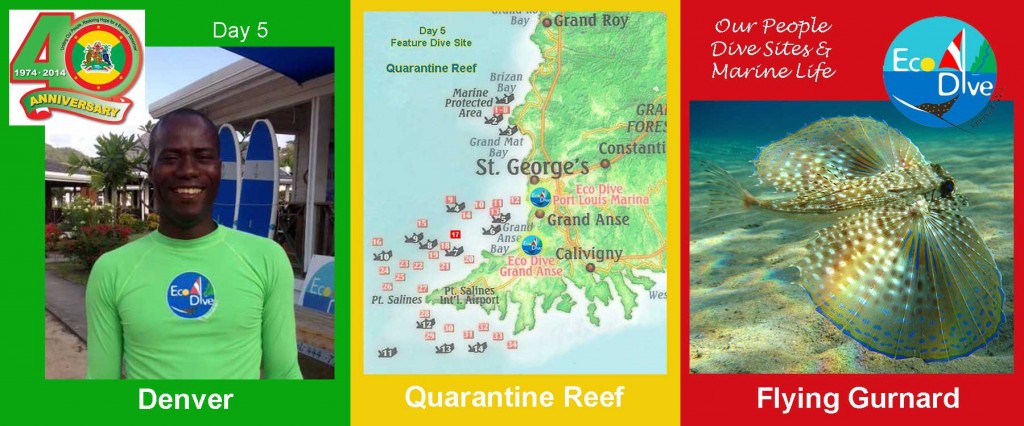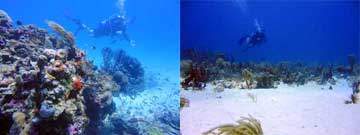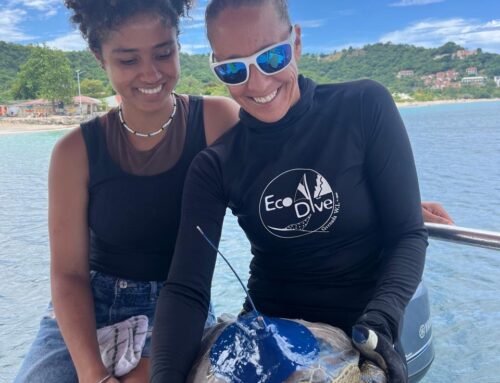Our People – Denver
Denver has been with Eco Dive for more than 10 years and is one of our longest term team members. A diver himself and an avid car and car racing enthusiast, at work Denny is primarily a boat captain and sailing instructor who also helps out with our snorkel guiding and scuba/watersports equipment maintenance. Whether you are diving, snorkeling, sailing or kayaking you are bound to meet Denny at Eco Dive. Always a smiling face and a helping hand we are very happy to have Denny on our team.
Dive Site – Quarantine Reef
Dive Profile 20’/8 m – 40’/12 m.
A shallow reef just off of Quarantine Point on the western end of Grand Anse Beach this reef makes an excellent second dive, photography dive for lots of natural light or a good beginner dive. With a huge white sand patch on the eastern edge of the reef this site also suits PADI specialty training or Discovers Scuba Diving or Open Water diver training. In recent months we have been able to brag Atlantic Longarm Octopus sightings, juvenile eagle rays, southern sting rays, pipefish and a wide variety of reef fish and invertebrates. The reef shape heading west climbs into 2/3 m mounds of relic reef and reef rock providing overhangs for the nocturnal critters to hide and a favorite hiding place for the occasional juvenile Nurse Shark.
Feature Creature – Flying Gurnard a.k.a. helmet gurnards (Dactylopterus volitans)
Found in warm and tropical seas, flying gurnards are elongated fish with very large pectoral fins, each of which is divided into a shorter forward portion and a much larger, winglike posterior section. These fins are quite colourful and in the Atlantic variety (the ones we see daily in front of Coyaba Beach Resort and Eco Dive) they are brightly spotted with blue highlights and lines on the edge of the wing. Flying Gurnards have a covering of bony plates on their heads earning them the nickname of helmet gurnards, these bottom dwelling fish grow to a maximum length of ~50 cm (20 inches).
With their short forward pectoral fins the gurnards can be seen ‘walking’ on the sea bed typically over seagrass beds and sandy channels while hunting for crustaceans and small invertebrates.
Like Sea Robins, thought to be their close cousins, they possess a swim bladder with two lobes and a “drumming muscle” that can beat against the swim bladder to produce sounds … or so they say, I think this is worth a test. Any one up for a beach Gurnard dive or snorkel?







